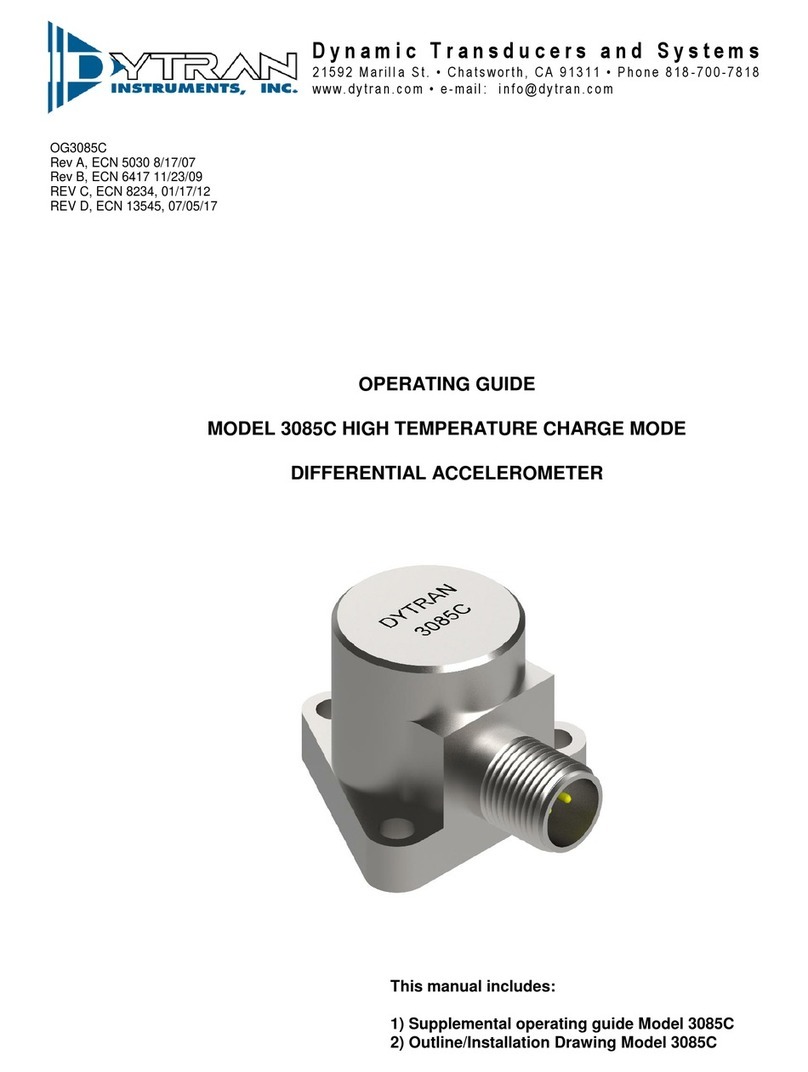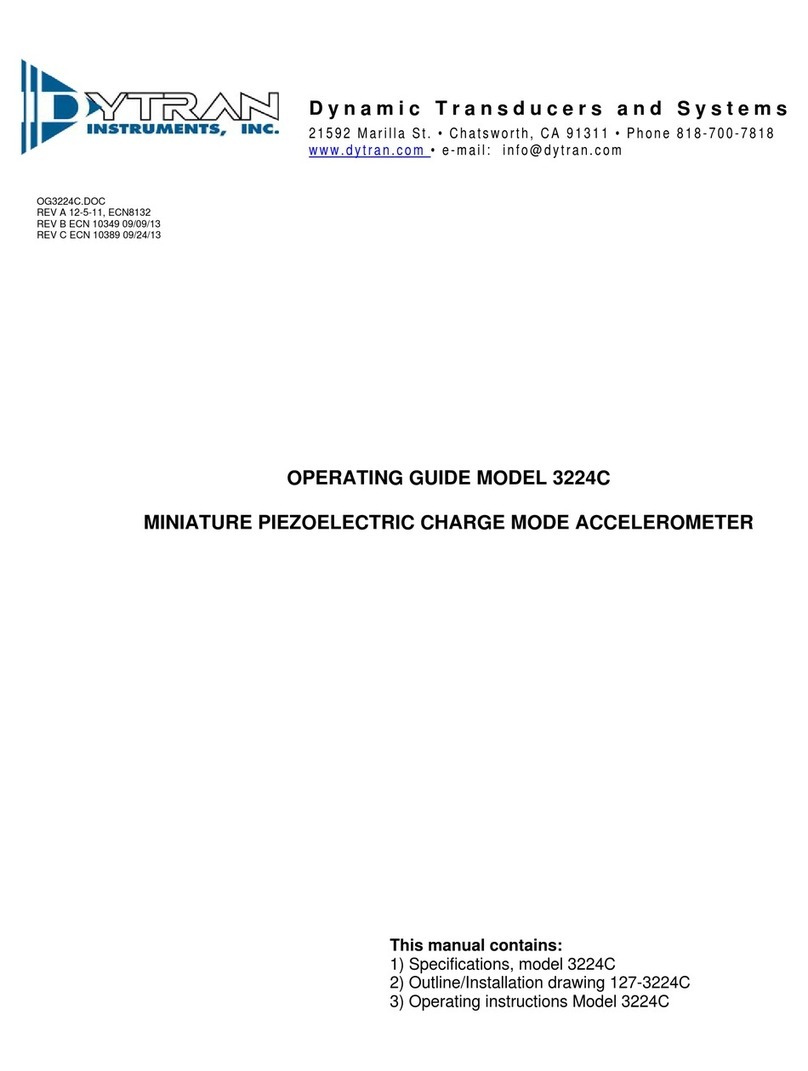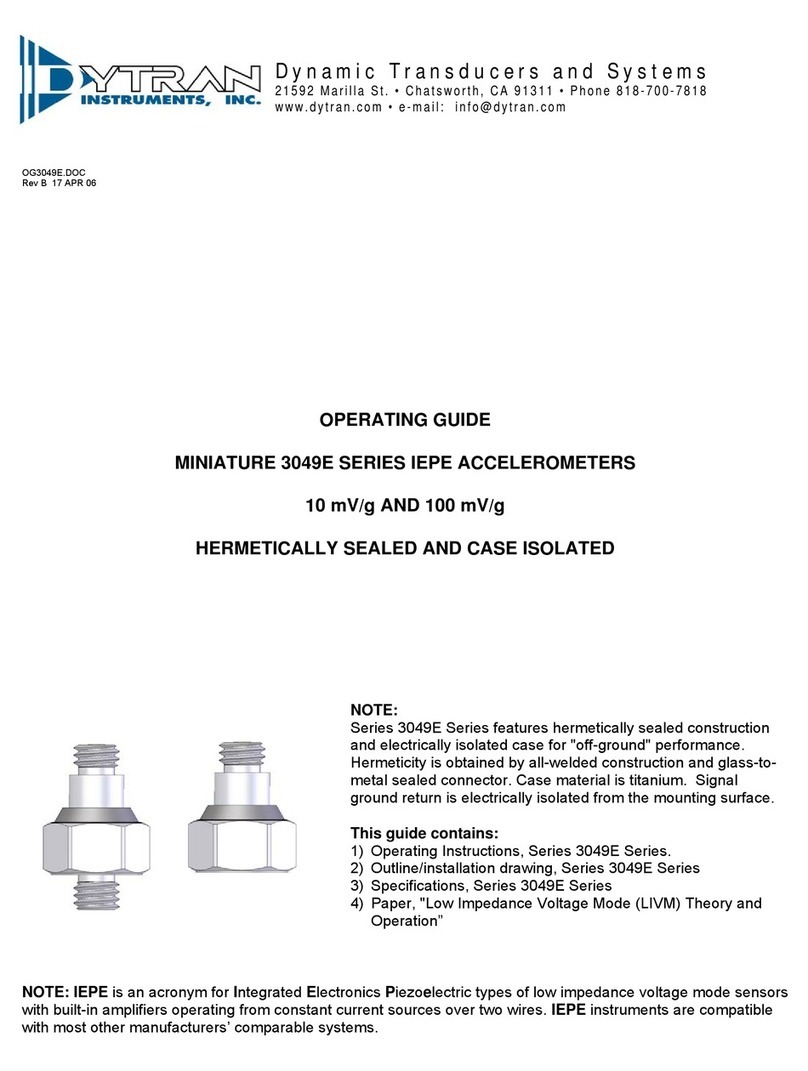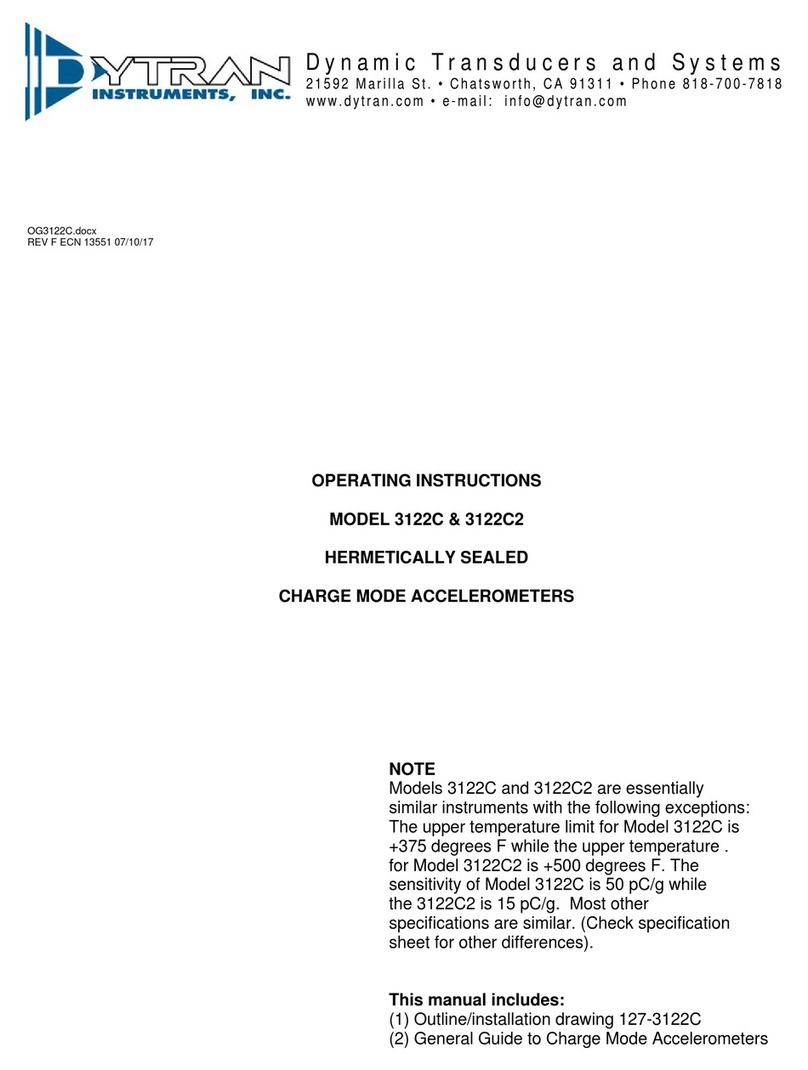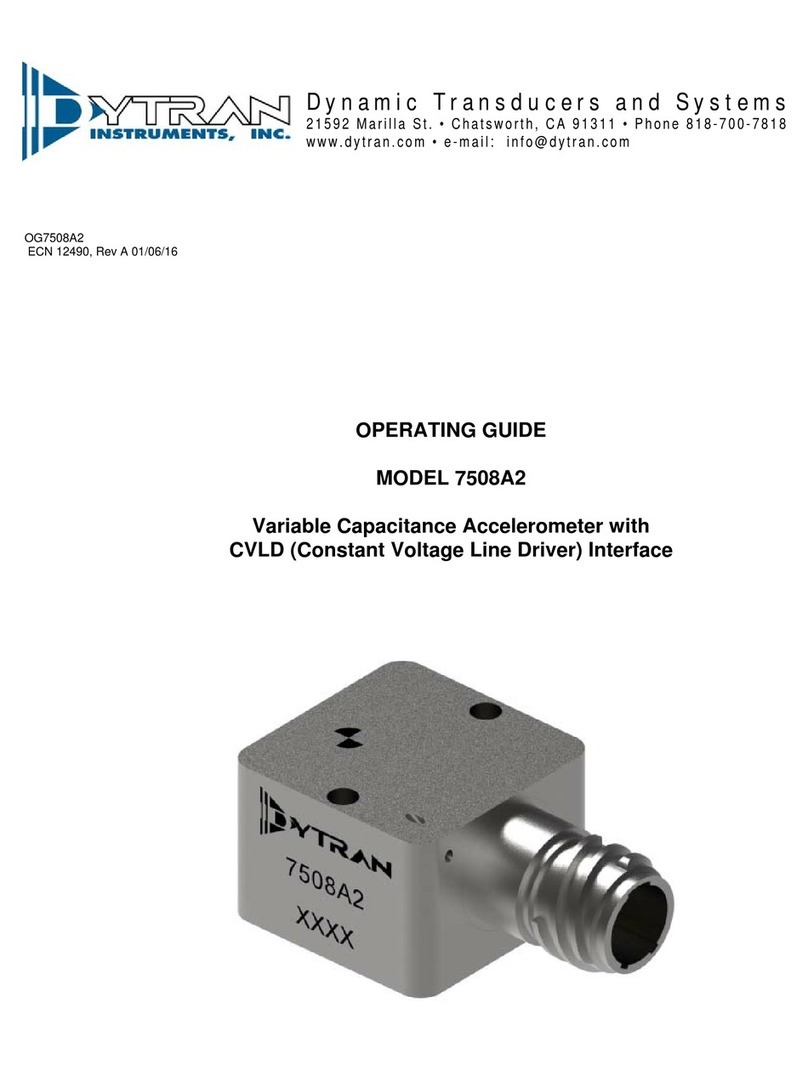
3
Referring to figure 2, the feedback resistor R
in conjunction with shunt capacitance C, forms a first
order high-pass filter which sets the low frequency
response of the accelerometer in accordance with the
following equation:
.16
f
-3db = ------------------ (eq.1)
RC
where:
f
-3db = lower -3db frequency (Hz)
R = resistance value R (Ohms)
C = total shunt capacitance C (Farads)
RC = discharge time constant TC (Seconds)
Equation 1 above, defines the frequency at
which the accelerometer sensitivity will be 3db down
when compared to the reference sensitivity measured
at 100 Hz.
The discharge time constant for all Models is
0.5 seconds, nom., yielding a lower -3db frequency of
0.3 Hz, from equation 1.
As rule of thumb, the lower -5% frequency is
three times the -3db frequency or 1 Hz.
INSTALLATION
(Refer to Outline/Installation drawing 127-
3055D) To install Model 3055D, is necessary to
prepare (or find) a flat mounting area of approximately
0.5 inch diameter. Ideally, the mounting surface should
be flat to .001 in. TIR. The flat mounting surface
ensures intimate contact between accelerometer base
and mounting surface for best high frequency
transmissibility, thus accuracy.
At the center of the mounting area, drill and
tap a 10-32 mounting hole in accordance with
instructions on drawing 127-3055D. Clean the area to
remove all traces of machining chips, burrs, etc.
Next, thread the Model 6200 mounting stud
into the base of the 3055D. The stud should enter
easily and thread in up to the raised collar of the stud
by hand. This collar prevents the stud from bottoming
inside the tapped hole in the 3055D where it could
possibly cause stresses in the base structure which
could, in turn, cause anomalous behavior of the
accelerometer at higher frequencies.
After seating the stud, spread a light coating of
silicone grease, or other lubricant, on either of the
mating surfaces and thread the accelerometer/stud
combination into the tapped hole by hand, until the
accelerometer base seats against the mounting
surface. Check to see that the mating surfaces are
meeting properly, i.e., that they are meeting flush and
that there is not an angle formed between the two
surfaces indicating that they are not co-planar. If this
condition is observed, torquing the accelerometer
down will strain the base causing possible poor
frequency response and even erroneous reference
sensitivity. Inspect the perpendicularity of the tapped
hole.
If the hand tight meeting between the two
surfaces is satisfactory, torque the 3055D to the
mating surface with 15 to 20 lb-inches of torque,
preferably measuring the torque with a torque wrench
torquing on the hex surface only.
Proper torque will ensure the best high
frequency performance from the instrument as well as
repeatability of sensitivity when mounting and
remounting. Excessive torque could damage the
ground isolation base.
Connect the cable (typically Models 6010AXX
or 6011AXX) to the accelerometer snugging up the
threaded lock ring tightly by hand.
NOTE: Do not use a pliers or vise grips on the
knurled lock ring. This could damage the
connector of the 3055D and/or the cable
connector.
To avoid stressing the cables which could lead
to early failure, especially under larger excursions of
the test object, it is good practice to tie the cable down
to a fixed surface near the mounting area at a point
approximately one inch from the accelerometer.
If there is excessive motion between the
accelerometer and the nearest tie point, allow a strain
loop of cable to let relative motion occur without
stressing the cable.
Connect the other end of the cable to the
"Sensor" jack of the Dytran power unit (Models 4102,
4103, 4110, 4114, etc.) and switch the power on.
Observe the monitor voltmeter located at the
front panel of each of the power units. If the meter
reads in the mid-scale region, (labeled "Normal"), this
tells you that the cables, accelerometer and power unit
are functioning normally and you should be able to
proceed with the measurement.












